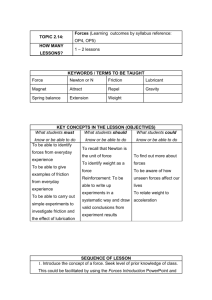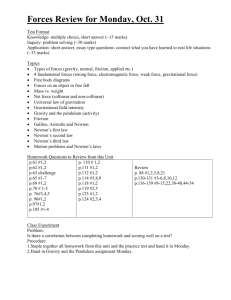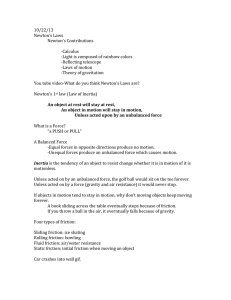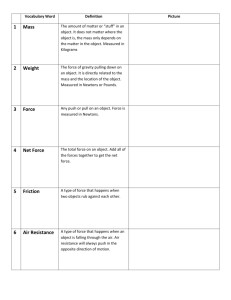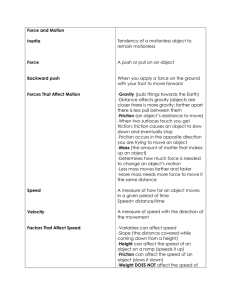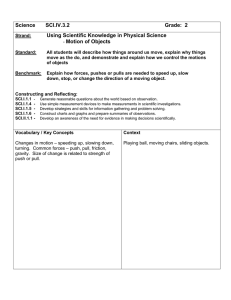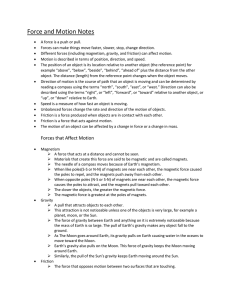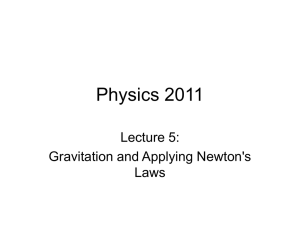Air Resistance
advertisement
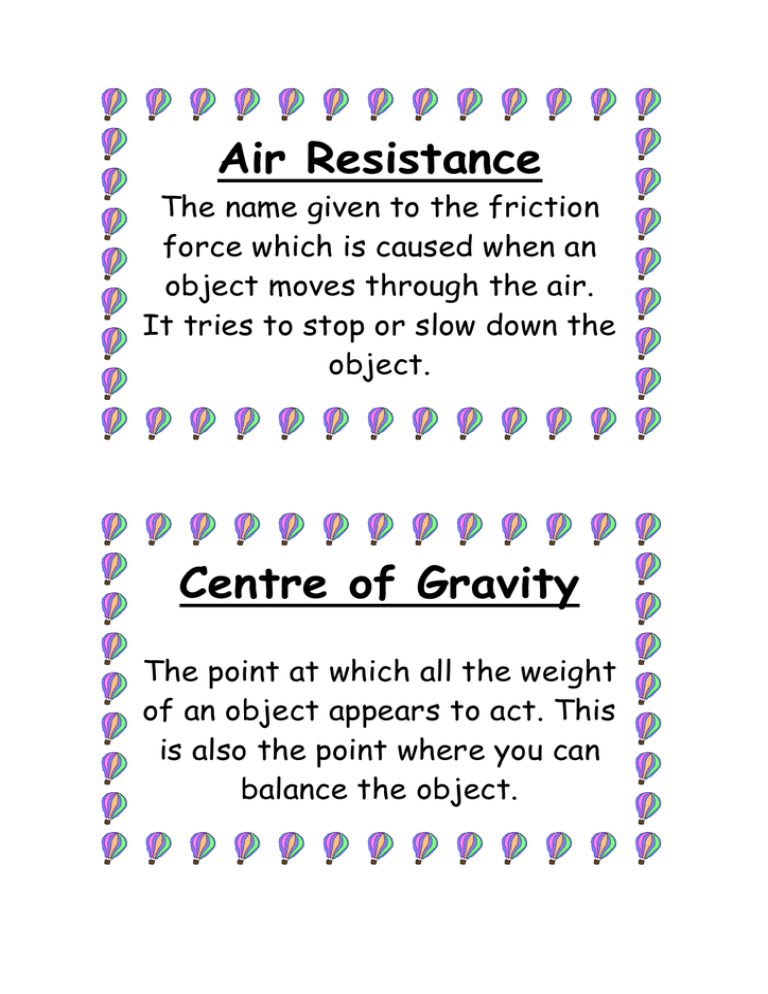
Air Resistance The name given to the friction force which is caused when an object moves through the air. It tries to stop or slow down the object. Centre of Gravity The point at which all the weight of an object appears to act. This is also the point where you can balance the object. Force A push, a pull, a twist or a turn. Gravity, friction and air resistance are all examples of forces. Force Diagram A diagram which shows how forces act on an object. It has arrows which show the size and direction of each force Friction The name given to the force which occurs when two objects move over each other. It tries to stop them moving. Gravity The name of an attractive force which acts between all objects. It is only obvious when one of the objects is very large, such as the earth. Lines of Force Imaginary lines which are drawn to show the direction of a magnetic force Magnetic field The space around a magnet where magnetism can be detected. It acts in all directions and is strongest at the poles of the magnet Mass The name given to the amount of material which an object contains. An object’s mass is always the same. It is measured in grams. Magnetic material A material which has the special property of being able to attract iron, nickel or cobalt to itself. Newton(s) The unit of force. It is named after the English scientist Sir Isaac Newton who was the first person to put together ideas about forces. Newton meter An instrument which measures the size of forces in newtons. It contains a spring which stretches as more weights are added Scale The markings on a piece of scientific equipment which help you work out the size of what you are measuring Stable When something is stable it is not changing. For example, an object might stay still. Streamlined Objects which are aerodynamic, curved and move through the air or water easily. Weight The name given to the size of the force of gravity which is acting on an object’s mass. The bigger its mass the bigger is its weight.



